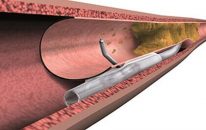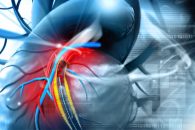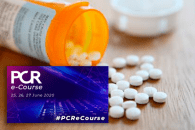The pattern of growth for each plaque differs according to the presence of certain risk factors. Atheroma volume at baseline was the most important predictor of plaque developing into obstructive lesions, as opposed to other characteristics historically considered as “dangerous.” The aim of this study was to analyze whether the pattern of non-obstructive lesion progression…
Subintimal Re-Entry in CTO Improves Outcomes
Courtesy of Dr. Carlos Fava. Chronic total occlusions (CTO) are still one of the greatest challenges in our field, thus forcing the development of different complex strategies to resolve them. Additionally, the use of imaging techniques during these procedures has improved long-term results. The CONSISTENT CTO (Conventional Antegrade Versus Sub-Intimal Synergy Stenting in Chronic Total Occlusions)…
European Association of Percutaneous Cardiovascular Interventions Position Statement During the Pandemic
This document emerges from the assembly of the European Association of Percutaneous Cardiovascular Interventions (EAPCI) and the Acute Cardiovascular Care Association (ACVC). Both associations gathered their most prominent experts, including people who worked in the European areas most affected by COVID-19. Their aim was to modify diagnostic and therapeutic algorithms to adapt the evidence collected…
EuroPCR 2020 | A Trick to Find the Perfect Projection to Treat Ostia or Bifurcation Lesions
The trick is to avoid testing empirically more to the right or to the left, a more caudal or cranial angular, and check what a multislice computed tomography suggests. The increase in coronary computed tomography imaging studies—due to guideline recommendations, practicality, and patient comfort—means that we frequently have these data in the cath lab even…
IVUS in Unprotected LMCA Angioplasty: Should We Change the Way We Use It?
Courtesy of Dr. Carlos Fava. Bifurcation lesions account for about 25% of all angioplasties and it is a challenge for which there is no single treatment strategy. Intravascular ultrasound (IVUS) has proven its usefulness, improving outcomes by reducing mortality in unprotected left main coronary artery (LMCA) angioplasty. A new strategy consists in conducting an IVUS after…
EuroPCR 2020 | FABOLUS FASTER: In the Quest for the Fastest, Most Potent Platelet Inhibition
This small study tested the pharmacodynamic effects of several antiplatelet agents. It concluded that tirofiban (Aggrastat) provides “more potent and consistent” inhibition of platelet aggregation compared with cangrelor in patients with ST-segment elevation myocardial infarction undergoing primary angioplasty. Thirty minutes after the initiation of treatment, there was a nearly threefold difference between tirofiban and cangrelor…
EuroPCR 2020 | Deferral Based on iFR vs. FFR: Are They Equivalent or Is There a New “Gold Standard”?
Age may impact results when making an angioplasty choice based on fractional flow reserve (FFR) vs. instantaneous wave-free ratio (iFR). After 2 years of follow-up, patients whose treatment of intermediate lesions was deferred based on functional testing had similar outcomes regardless of whether this decision was informed by FFR or iFR. However, iFR performance was constant,…
EuroPCR 2020 | Revascularization vs. Initial Medical Treatment in Chronic Patients
There is no survival advantage with invasive coronary revascularization over initial medical treatment in patients with chronic coronary artery disease. However, revascularization did reduce the incidence of unstable angina and its symptoms, according to this new meta-analysis published in Circulation and presented virtually at EuroPCR 2020. There was no significant difference in spontaneous infarctions overall, but…
EuroPCR 2020 | Sudden Death Increase Two to Three Times While MI Rate Falls
The number of sudden deaths reported around the world is on the rise in Covid-19 times. These deaths are caused either by the virus and its capacity to produce lethal arrhythmias or by the fact that patients are staying away from hospitals and are not being examined. Cardiologists were the first to warn that the…
Olive Oil and Cardiovascular Risk: The Higher the Consumption, the Lower the Risk?
High olive oil intake was associated with lower risk of coronary heart disease and cardiovascular disease in two large prospective cohorts of men and women. The substitution of margarine, butter, mayonnaise, and dairy fat with olive oil can have a significant impact on cardiovascular health. The benefits of olive oil intake have been well studied…
Effects of Health Promotion Since Childhood
All clinical practice guidelines indicate healthy lifestyle recommendations and, as cardiologists, we have slowly but surely implemented such practice. However, patients come to us once they have had health problems. What would happen if people had these recommendations at an earlier stage in their life? Would that prevent them from ever becoming patients? There was…










